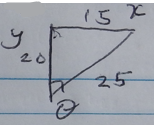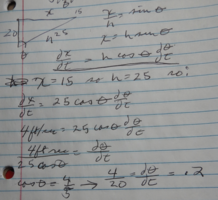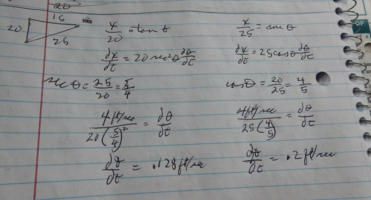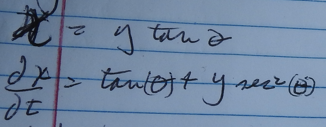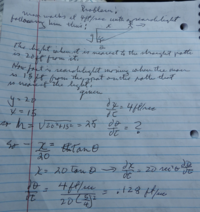allegansveritatem
Full Member
- Joined
- Jan 10, 2018
- Messages
- 962
Here is the problem, actually it is an example from my text book:
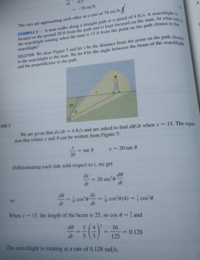
I worked this out as it is shown here and got the same result as the book. Then I began wondering
what would happen if I used the sine function instead of the tangent for the equation
and I got this result:
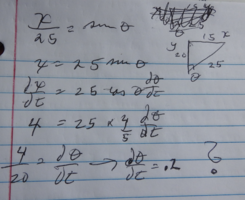
Why didn't it come out the same? I mean shouldn't I have gotten the same result whether I
x was equated in terms of tan or in terms of sine? Or did I make some stupid little mistake
that I am blind to and have been all day, I might add? I have redone this sine version of the problem 5 or 6 times
always with the same outcome.

I worked this out as it is shown here and got the same result as the book. Then I began wondering
what would happen if I used the sine function instead of the tangent for the equation
and I got this result:

Why didn't it come out the same? I mean shouldn't I have gotten the same result whether I
x was equated in terms of tan or in terms of sine? Or did I make some stupid little mistake
that I am blind to and have been all day, I might add? I have redone this sine version of the problem 5 or 6 times
always with the same outcome.

